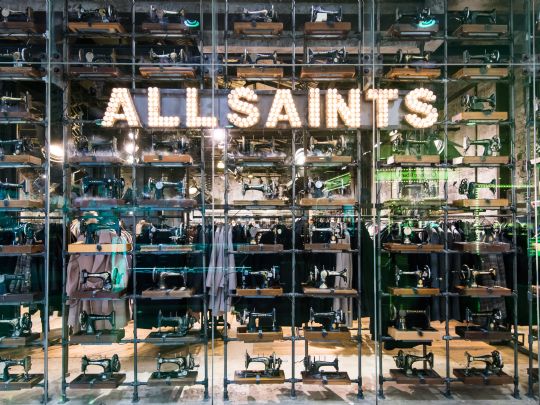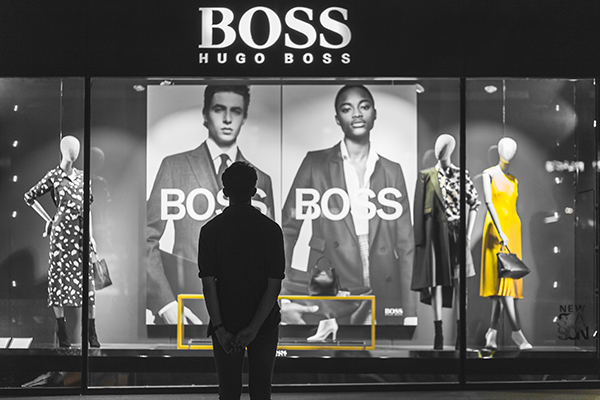Self-service checkouts can be found in an increasing number of stores and the functionality of the technology continues to advance. But the devices have largely been confined to the grocery sector and adoption rates in certain retailers have hit a peak. So what is the future for self-service? Somewhat unsurprisingly, the viewpoint among vendors is that the future looks bright. Among them is John Curnow, area industry director for retail and hospitality at NCR, one of the big players in the industry, who says “we have seen a massive
take-up” of units.
NCR has jumped from having 5,000 units installed in the UK and Ireland two years ago to a current 15,000. The level of adoption by retailers is determined by store-type. While city centre convenience stores that have installed the technology can sometimes have 70 per cent of their check-outs given over to self-service, the figure for some other store types might be around 20 per cent. Overall though, Curnow says the percentage given over to self-service has increased from 25 per cent at the end of 2009 to 33 per cent at the end of 2010.
The benefits to consumers are well known, according to Andrew Banks, head of petro and unattended at VeriFone UK: “It’s all about queue busting, freeing resources, improving efficiency, speeding throughput - taking pressure off the retailer and making check-out faster, more convenient and readily available for the consumer. Wherever there is a ‘queue to buy’ there is a potential barrier to sales and consequently an opportunity to benefit from self-pay.”
But despite the clear upsides, many retailers have found a threshold has been reached with customer usage. At the Anglia Co-operative, 45-60 per cent of its customers use self-service checkouts - from the 30-40 per cent of its till lanes that have been converted to self-service. Richard Feest, head of IT at Anglia Co-operative, says he has found this level to be common among many retailers and that non-usage is not just the domain of older less technologically confident customers. “In all age groups there will be some people who are extremely anti self-checkout,” he says.
This has no doubt been partly fuelled by failings in some of the technology that can lead to the dreaded ‘unexpected item in the bagging area’ and other equally impersonal messages. Paul Fisher, managing director at Wincor Nixdorf, agrees: “There are undoubtedly still some pain points that need ironing out. Unreliable and slow technology simply won’t cut it in the modern retail environment. From the customer’s point of view, they want an accurate, efficient, user-friendly experience from entering the store to leaving it.”
He suggests this focus on improving the overall retail environment is the constant driver of innovation in technology in-store. “Whether it’s in the ability to design bespoke technologies for a certain store, or a particular customer demographic, or improvements in the design of these technologies for example in self-checkout, to achieve a smaller footprint or ensure the ‘unknown item in the bagging area’ error alerts become a thing of the past,” he says.
User-friendly
NCR is among the vendors at the forefront of developing new devices that are more user-friendly. One of its latest developments is a checkout unit with a reversible screen that can be used in self-service mode by customers or switched around to face a sales assistant and be used as a conventional checkout. In self-service mode the customers place their goods onto an ‘input belt’, self-scan, and then bag the items. Curnow says: “It’s a fully flexible front-end whose use will be dependent on patterns of trading through the day. It’s been trialled by one customer (a grocery retailer) and so far it is
going pretty well.”
Also making life easier for shoppers is another NCR development - its personalisation platform that Curnow says “enables the device to recognise customers’ preferences” that could involve them stipulating that they are left-handed and selecting a preferred payment card. These preferences can be set through a retailer’s existing loyalty scheme or a solution such as the newly introduced NCR Enterprise Preference Manager.
Banks believes such developments all contribute to making self-service more acceptable to more shoppers: “As multi-directional scanning technology becomes more widely available, many of the problems will disappear and self-service will become faster, more efficient and popular with consumers.”
But as ever cost will continue to play an important part in retailers’ adoption of the technology. “As with all forms of PoS infrastructure there is often a compromise between cost and performance. As component technologies such as screens, scanners and payment devices become more competitively priced and widely available we will see better integration and more ergonomic and efficient self service set-ups,” says Banks. These advances might then finally see the technology make that big breakthrough into non-food. Banks for one believes it will make the shift, starting with the supermarkets: “Where retailers are already using self-service successfully within their grocery businesses, there is solid justification for them introducing it into their ancillary fashion, lifestyle and leisure businesses.”
This is already happening at a modest level with B&Q using the technology in certain stores and Wincor Nixdorf supplying equipment to IKEA. NCR is working with Boots - where the small average number of items in the basket works well. Curnow says the “sweet spot” is 15 items or less but with the advent of the convertible input-belt devices this could change.
NCR is also involved in trials with a number of other non-food retailers including WHSmith and various fashion merchants. “We are talking to a number of clothing retailers that want to invest in it and we are looking at the finer points of how to make it work. Self-service will branch significantly from food in the future. It’s a service offer and customers increasingly want to serve themselves and not wait,” reveals Curnow.
What cannot be overlooked with all these devices is that they are ultimately PoS tools and that the critical aspect to of all of them is to ensure maximum security for customers and merchants and adhere to the increasing legislation and regulations placed on the retail industry.
Banks says: “Whatever technical developments take place within the self-service arena, there is one fixed prerequisite - security. Unattended payment devices need to be extra secure, protecting card holders’ valuable data using comprehensive end-to-end encryption.”
With all these components in place the self-service industry looks incredibly exciting and with the advance of smartphones, tablet devices, NFC, and contactless payments it is even more likely that both merchants and shoppers will continue to see great changes in-store over the next few years.
Latest News
-
Currys upgrades payment technology to enable AI-powered shopping experiences
-
Waitrose pledges new ‘market leading’ welfare standards for charcuterie
-
Ocado ends tech exclusivity agreement in ‘most markets’
-
Asda announces new group CIO
-
What’s next for retail in 2026?
-
The most read Retail Systems stories of 2025
Beyond Channels: Redefining retail with Unified Commerce
This Retail Systems fireside chat with Nikki Baird, Vice President, Strategy & Product at Aptos will explore how unified commerce strategies enable retailers to tear down these barriers and unlock new levels of operational agility and customer satisfaction.
The future of self-checkout: Building a system that works for consumers and retailers
In this webinar, industry leaders discussed what the future of self-checkout looks like and how retailers can make the technology work for everyone.
© 2024 Perspective Publishing Privacy & Cookies










Recent Stories